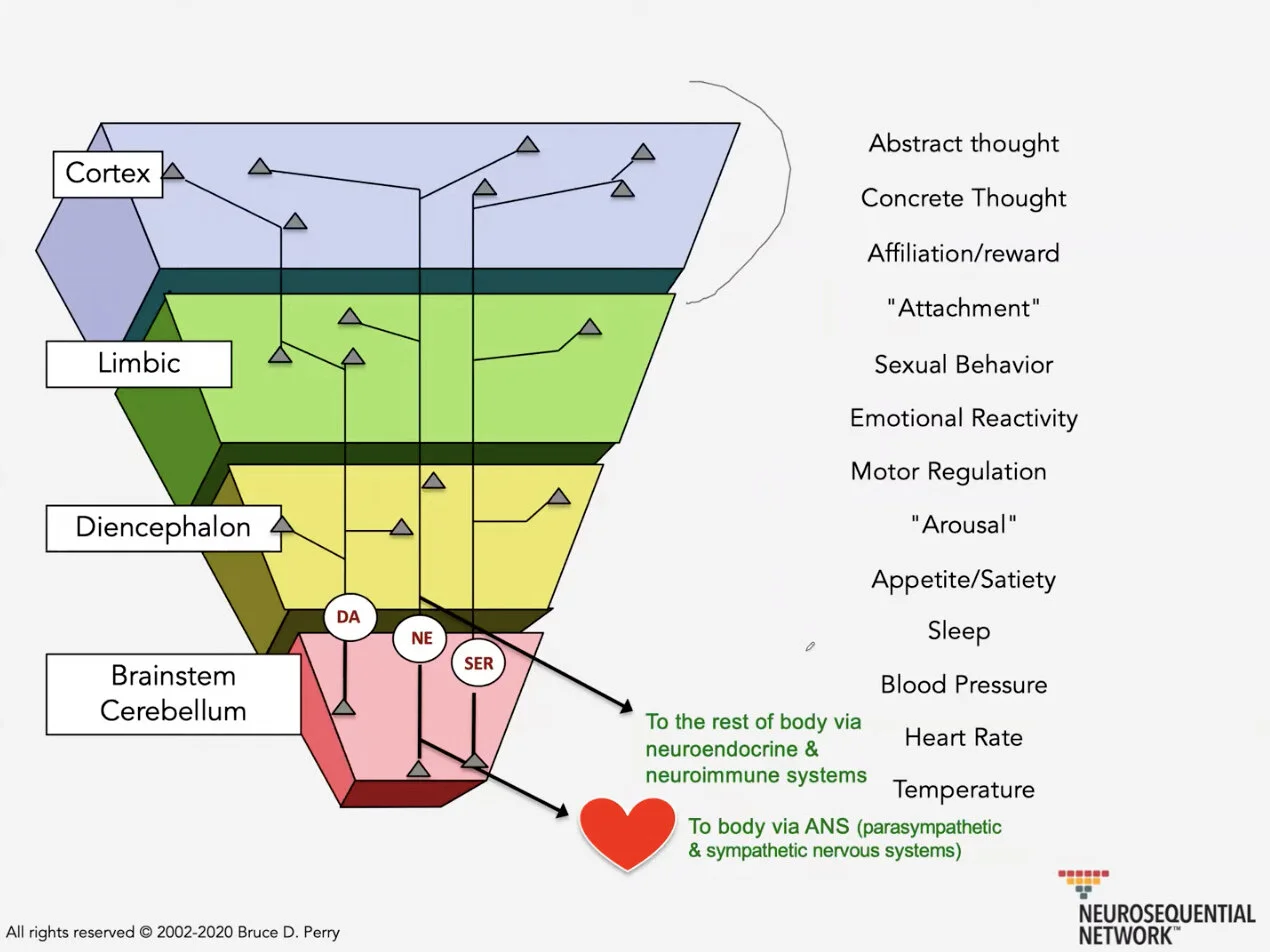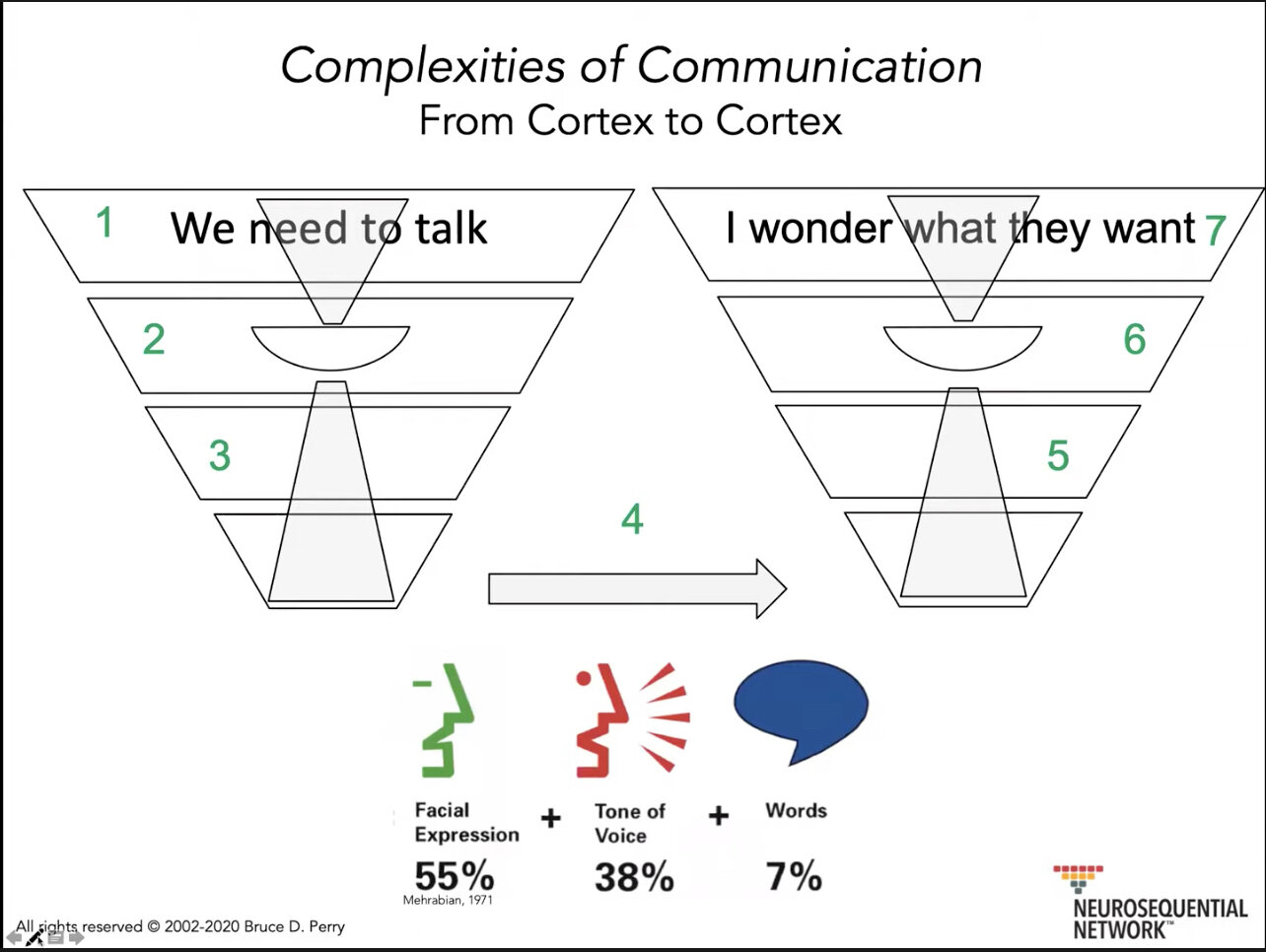“We Need to Talk.“
Have you ever been in an argument with someone that felt like it was going nowhere? Have you ever felt misunderstood? Have you ever misunderstood someone else? I would be surprised if anyone answered “no” to any of these questions.
Communication: It’s one of the most important aspects of human life yet many of us have struggled to communicate effectively at one time or another. What we view as a simple dialogue between two people is actually a product of many complex processes occurring in our brains. And these processes interact with each other in a circular fashion. That is, it isn’t as simple as cause and effect; what I say influences you and what you say influences me and we keep interacting within this loop. It’s no wonder miscommunication happens frequently and things get lost in translation.
Several weeks back, I had to watch a video for one of my graduate classes. It was posted by clinician and researcher Dr. Bruce D. Perry and it was about a concept called Sequence of Engagement. According to Dr. Perry, when we attempt to communicate with another person, we’re trying to access their cortex, or the cognitive part of their brain. What’s interesting to note, however, is that the cortex is actually a difficult part of the brain to access. Why is this? In terms of brain structures, the cortex is one of the youngest parts of the brain and typically doesn’t fully develop until around 28 to 30 years of age. It’s actually not possible for us to access someone else’s cortex without other primitive parts of the brain being part of the interaction. The diagram below shows how the cortex is impacted by lower parts of the brain. On the right side, there is corresponding list of processes these different areas of the brain are responsible for.
Source: YouTube
So what does this mean for us in terms of communication? When we communicate with someone, there are actually several things happening aside from words being verbalized on one end and being heard on the other. The diagram below visually takes us through what happens when someone says, “We need to talk.” Let’s say I’m the person who’s saying this statement. When I say this statement out loud, I’m first utilizing the cognitive part of my brain. Before it gets to the person I’m talking to, the statement gets filtered through the lower, primitive parts of my brain. These parts of my brain are impacted by several neural components that are influenced by my past experiences. This filter gets applied and is shown mostly in my facial expression and tone of voice; note how the actual content makes up only 7% of what is communicated. When the statement is heard by the person on the receiving end, it goes through a similar process. What they hear is filtered firstly through the lower, primitive parts of their brain. These somatic, emotional aspects of the brain influence the ending cognition associated with the statement, which ends up being, “I wonder what they want.”
Source: YouTube
Take a moment to reflect on everything you just read.
Does it seem complex to you? That’s because it is! We often see conversations as simply an exchange of words. However, it’s much more than that. It’s an interaction between two people that is influenced by each person’s brain development, genetics, and past experiences. To complicate things further, when trauma is involved, it makes emotional regulation difficult and hinders our ability to access the cognitive part of our brain. When we experience something traumatic, the primitive parts of our brain are so overwhelmed that the cognitive part of our brain goes “offline.” This is why survivors of trauma often are unable to provide a coherent narrative of what happened to them; the part of their brain that’s responsible for making meaning out of experiences was not able to do so as they were flooded with highly distressing emotions. In future interactions, fragments of the traumatic event may become triggered in some way, leading to dysregulation (i.e., flooding of overwhelming emotions) and an inability to relationally connect.
So, knowing all of this, how can we communicate more effectively with others? Luckily, humans are wired to connect with other people. Neuroscience and attachment research has supported this notion. Without others, we quite literally cannot develop into functioning human beings. We need our caregivers in early life and we need safe and secure relationships throughout our lifespan.
When we attempt to communicate with another person, we need to make sure we are calm and regulated. This requires us to be in tune with our own bodies and be alert to cues that we may need to do something to calm ourselves down. Next, we need to make sure the person we are trying to communicate with is regulated. If the person is flustered and upset, how likely is it that they’re going to take in anything you’re trying to tell them? Pretty unlikely. If it’s someone you feel safe and connected to, you can try helping them regulate. Once both parties are regulated, a sense of safety needs to be established. Feeling secure in a relationship alters your perception of what you hear. For example, if you feel secure in a relationship and the person provides you with constructive criticism, you may willingly accept this person’s comments because you know they have your best interest at heart. On the contrary, if you feel insecure in your relationship, you may take their comments negatively and question your self-worth. It’s important that when we communicate about difficult topics we create a safe and secure environment first. After we’re regulated and connected, then we can move into the cognitive part of our brains and reason with one another.
Source: YouTube
As we move into the month of Ramadan, it’s important that we remember to have patience with one another, especially when we are communicating. As I mentioned earlier, past traumatic experiences can significantly impact the brain and consequently, future interactions. Unfortunately, most of us will experience something traumatic in our lifetime. Life-threatening or not, these experiences can have a lasting impact on us and our ability to communicate effectively. Give others the benefit of the doubt and remember that there is so much going on that we may be completely unaware of - in ourselves and in others.
No matter how well we think we know someone, we have no idea what it’s like to actually be them. And remember that having difficult conversations with others requires a foundation of trust, safety, and security. Conflict and discomfort in relationships is inevitable; it’s how we relate to one another in these moments that determines the strength of our love and connection.
Suggested Resources Related to Psychology and Neuroscience:




